The Bees and a Vegetable Garden in the Philippines
The buzzing sounds of bees in our garden in Lucena mean only one thing for me: more harvests. Some people drive away bees thinking they eat the vegetables in their garden, when the truth is that the bees are needed by our plants to produce fruits and vegetables.
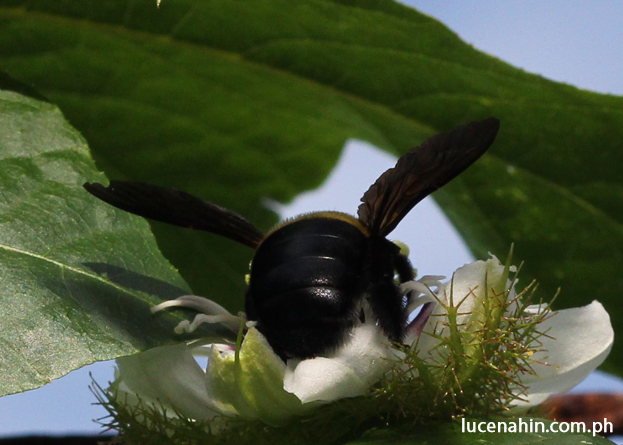
Carpenter Bee on Marya Marya (Passiflora foetida)
Have you ever heard someone say that when you have few harvest, you put two flowers together so you’ll have more? That’s pollination – some version of hand pollination that is. Pollination, in simplest terms, happens when pollens from a male part of the flower are received by the female part of the same flower or another flower of the same plant. What results are the fruits and vegetables that we harvest.
Pollination is done for us by bees (and other animals) that visit our garden. By feeding on several flowers, bees transfer pollen around helping plants produce fruits like Avocado, Mangoes and vegetables like Okra or Eggplant. Bees in particular are pollinators to the many other crops that you can find in this list.
Can you now imagine what will happen to our harvests when bees disappear? Did you know that they are starting to, right here in the Philippines?
Another reason people drive bees away is because they are afraid of their sting. We have plenty of bees visiting our garden and no one has ever had any trouble with them. I stood as close as I can feel safe with the bees this morning, taking pictures of them for documentation and they just went about doing their own businesses. The stinging stories you heard probably happened when the person approached a bee hive or that the ‘bee’ was more likely a wasp. In any case, we should always exercise caution when dealing with wildlife, but we shouldn’t kill or drive away the bees that visit our garden.
As I have mentioned, we noticed an increase of bees in our garden these days. Our garden is only a year old, so I hope that there will be more bees that will come visit and make our garden their home.
Here are the bees that I found while looking around this month:
Asiatic Honey Bee (Apis cerana) on Yellow Alder (Turnera ulmifolia)
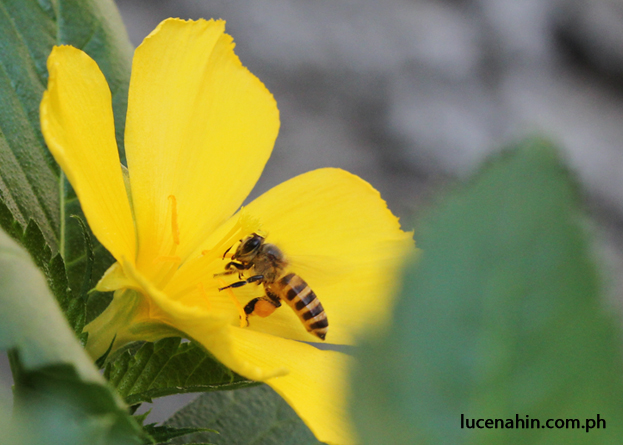
This honey bee, called Ligwan in Filipino, is native to the Philippines and the rest in southern and southeast Asia. These bees have already been successfully cultivated to help farms in other countries like Vietnam. How frustrating it is to hear that their population is declining here in the Philippines and farmers are also reporting lesser crop yields! These honey bees are also said to be important pollinators of coconut trees, which we have a lot of in this part of the country.
Giant Honey Bee (Apis dorsata breviligula) on Purple Skyflower (Duranta erecta)
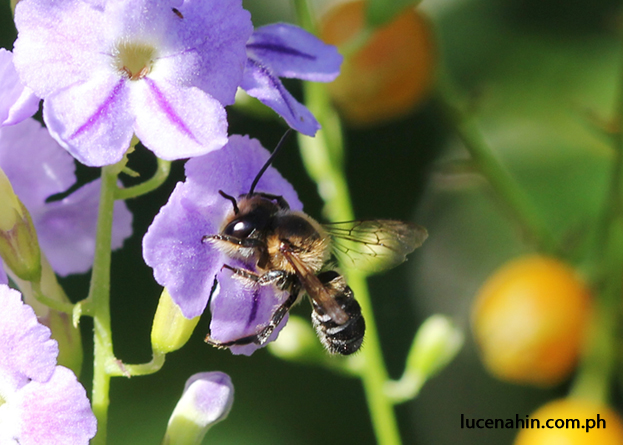
These honey bees are called Putyutan locally. These native honey bees usually build their nests hanging under huge tree branches.
Carpenter Bee (Xylocopa latipes) on Patola (Luffa aegyptiaca)
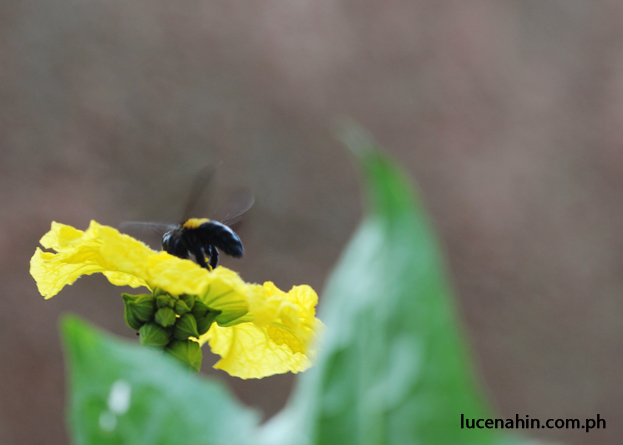
There were 4 Carpenter bees that I can count in the Patola/Sitao area in our garden this morning. They are quite large and have a rather loud buzz like the Blue Banded Bee, only louder. They can seem scary because of these, but they will pretty much leave you alone unless provoked, based on what I’ve read and like how they ignored me earlier.
Blue Banded Bee (Amegilla cingulata) on White Skyflower (Duranta erecta alba)
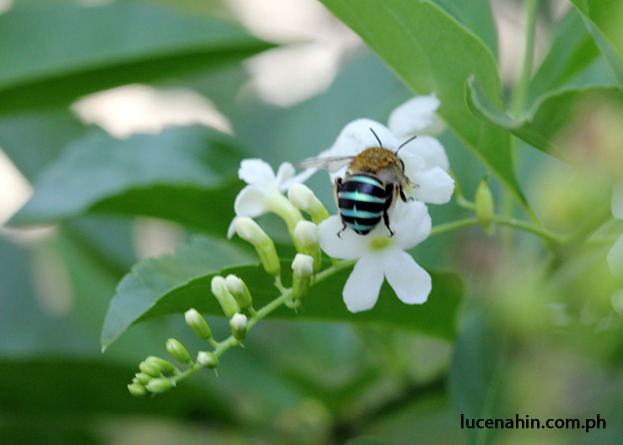
This is a solitary bee that apparently moves around a lot so please excuse the blurry shot. They are said to prefer feeding on blue flowers and the flowers of tomato and eggplant, although I always find them among these white flowers.
Unidentified
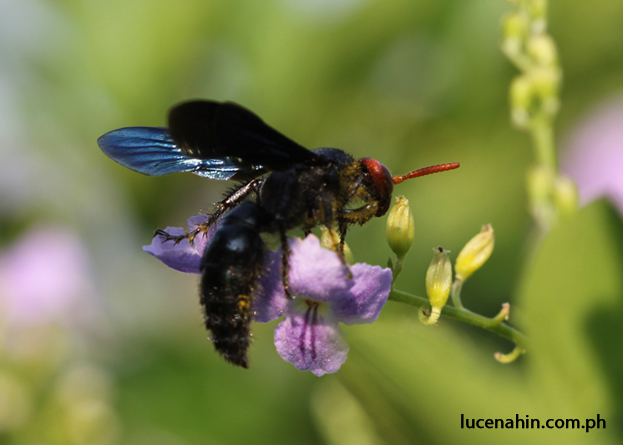
I’m not sure if this is a bee. Please help identify if you know.
I was also hoping I photographed a Native Stingless Bee (Tetragonula spp.), but sadly no. Judging by the size, I most likely missed them in the garden, if there were any.
How can we help the bees?
We can start by planting a native flower in a big pot (if you prefer pots) – less maintenance, no need for pesticides, and easily recognizable by bees and other insects. Then you can go from there.
Bees have been studied to increase yield up to 40%, although I don’t have enough data to say how much it did so for our vegetable garden.
I have an article coming up about our harvests for our first year, which I will link to this. The pictures of the bees were taken on 3 separate dates: August 16, 18 and 19, 2015 from 7:30 – 9:00am using Canon 60D with EF 100mm f/2.8 USM Macro Lens.
We see bees in our garden every day. ^_^
References:
http://beephilippines.info/apis-cerana-honeybees/
https://en.wikipedia.org/wiki/Apis_cerana_indica
http://beephilippines.info/putyokan-apis-dorsata-honeybees/
http://www.buzzaboutbees.net/types-of-bees.html
Beekeeping in the Philippines
http://www.beekeeping.com/articles/us/beekeeping_philippines.htm
https://sites.google.com/site/philippinebeekeeping/Home/types-of-bees
Pollination
http://msucares.com/lawn/garden/vegetables/pollination/
http://beephilippines.info/pollination-in-the-philippines/
http://aggie-horticulture.tamu.edu/galveston/beneficials/beneficial-63_pollinators-_carpenter_bees.htm

 Philippine Peso
Philippine Peso